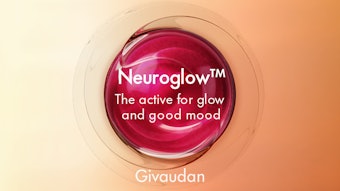UV filters formulated into sunscreens in the United States must be approved by the US Food and Drug Administration (FDA), as they are regulated as drugs in the United States. Organic UV filters, shown in Table 1, do not include zinc oxide and titanium dioxide, which are inorganic UV filters.
Organic UV filters are aromatic compounds with a great number of double bonds. The salient feature of these molecules is necessary for the absorption of UV radiation, and avobenzone (shown in Figure 1) is an example of this. These molecules must absorb within the range of UV values to be of interest in sun care.
UVA: These 320–400 nanometer, long-wave solar rays, although less likely than UVB to cause sunburn, penetrate the skin more deeply. This type of radiation is considered the chief culprit behind wrinkling, leathering and other aspects of photoaging.
UVB: These 290–320 nanometer, short-wave solar rays are more potent than UVA in producing sunburn. They are considered the main cause of basal and squamous cell carcinomas as well as a possible cause of melanoma.
The difference between the molecules is dictated by their structure. UV filters differ in the specific wavelength that they absorb and the efficiency that they absorb (extinction coefficient). This explains why formulations have more than one sunscreen present.
It is important for the formulator to be cognizant of the physical nature of the sunscreens. For example, avobenzone and oxybenzone are crystalline and must be dissolved in a suitable solvent. They, like the other oil-soluble UV filters, should be formulated in the oil phase of an emulsion. Even if the sunscreen is a liquid, the miscibility in the formulation is crucial. On the other hand, ensulizole is a water-soluble sunscreen and should be added to the water phase of an emulsion. Obviously, if formulating a water resistant-sunscreen, water solubility or insolubility of a sunscreen is of prime importance.
The mix of UV filters is important for an absorbance balance, and this mix can also be extremely important from a photostability standpoint, as some UV filters actually catalyze the photodegradation of other UV filters.










